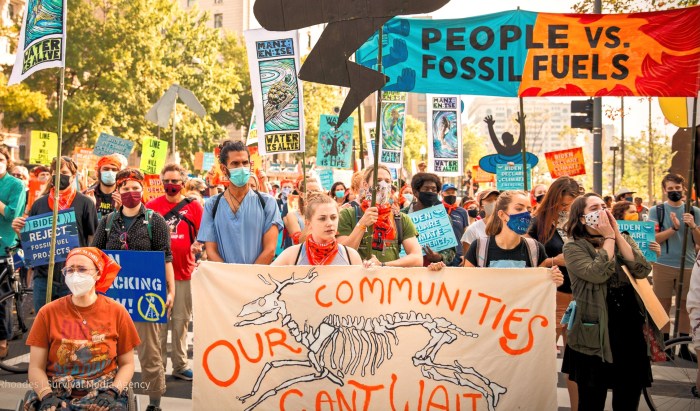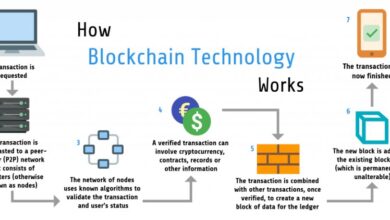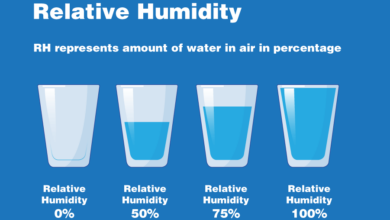
Fight Climate Change, End Fossilflation: Heres How
Fight climate change end fossilflation heres how – Fight Climate Change, End Fossilflation: Here’s How – The world is facing a dual crisis: climate change and “fossilflation,” the soaring energy prices fueled by our reliance on fossil fuels. This perfect storm is not only threatening our planet but also straining our wallets.
The good news is, we have the tools and knowledge to shift towards a sustainable future, one that protects the environment and ensures affordable energy for all.
From the melting glaciers to the intensifying heat waves, the signs of climate change are undeniable. The scientific consensus is clear: human activity is the primary driver of this crisis. And while we grapple with the consequences of a warming planet, we are also witnessing the economic fallout of our dependence on fossil fuels.
The volatile energy markets, driven by geopolitical tensions and supply chain disruptions, are pushing energy prices to record highs, impacting everything from our grocery bills to our transportation costs. This is the reality of “fossilflation,” a stark reminder of the unsustainable nature of our current energy system.
The Urgency of Climate Action
The Earth’s climate is changing at an unprecedented rate, driven primarily by human activities. This change is already having significant impacts on our planet, and the consequences are expected to become more severe in the coming years. It’s not just about polar bears or melting glaciers; it’s about the very fabric of our planet and the future of humanity.
The Scientific Consensus on Climate Change
The overwhelming majority of climate scientists agree that human activity is the primary cause of global warming. This consensus is based on decades of research and observations, which have shown a clear link between the increase in greenhouse gases in the atmosphere and rising global temperatures.
The Intergovernmental Panel on Climate Change (IPCC), the leading international body for the assessment of climate change, concluded in its 2021 report that “it is unequivocal that human influence has warmed the atmosphere, ocean and land.”
Impacts of Climate Change
Climate change is already having a range of impacts on our planet, including:
- Rising Sea Levels:As global temperatures rise, glaciers and ice sheets melt, adding more water to the oceans and causing sea levels to rise. This poses a significant threat to coastal communities around the world, as they face increased risks of flooding, erosion, and saltwater intrusion.
- Extreme Weather Events:Climate change is making extreme weather events such as heatwaves, droughts, floods, and storms more frequent and intense. These events can cause widespread damage to infrastructure, agriculture, and human health.
- Biodiversity Loss:Climate change is altering ecosystems and disrupting natural habitats, leading to the loss of biodiversity. This has significant implications for the balance of nature and the services that ecosystems provide, such as pollination and carbon sequestration.
- Human Health Impacts:Climate change is also affecting human health, leading to increased risks of heat stroke, respiratory problems, and the spread of infectious diseases.
Examples of Extreme Weather Events, Fight climate change end fossilflation heres how
The connection between climate change and extreme weather events is becoming increasingly clear. For example, the 2021 heatwave in the Pacific Northwest of North America, which reached record-breaking temperatures and resulted in hundreds of deaths, was found to be virtually impossible without human-caused climate change.
Similarly, the devastating floods in Germany and China in 2021 were exacerbated by heavy rainfall associated with climate change.
Fossil Fuels and “Fossilflation”
The term “fossilflation” encapsulates the intertwined crisis of rising energy costs and the reliance on fossil fuels. As global demand for energy increases, the limited supply of fossil fuels, coupled with geopolitical instability and supply chain disruptions, drives up prices.
This phenomenon not only impacts the economy but also has a profound influence on everyday life, impacting individuals, businesses, and governments alike.
The Relationship Between Fossil Fuel Dependence and Rising Energy Costs
Fossil fuels remain the dominant energy source globally, powering our homes, industries, and transportation systems. However, this dependence comes with a heavy price tag. As demand outpaces supply, prices for oil, gas, and coal escalate, driving up energy costs across the board.
This is particularly true for countries heavily reliant on fossil fuel imports, leaving them vulnerable to price fluctuations and supply disruptions.
- Increased Production Costs:Extracting fossil fuels from increasingly challenging locations, such as deep offshore or Arctic regions, requires significant investments and complex technologies, contributing to higher production costs and ultimately higher energy prices.
- Geopolitical Tensions:Global events, such as wars, sanctions, or political instability in major fossil fuel-producing regions, can disrupt supply chains, leading to price spikes. This vulnerability highlights the interconnectedness of global energy markets and the potential for geopolitical factors to influence energy costs.
- Limited Supply:Fossil fuel reserves are finite, and their extraction and use come with environmental consequences. As global demand continues to rise, the limited supply puts upward pressure on prices, making energy more expensive.
Transitioning to Renewable Energy

The transition to renewable energy is essential to combat climate change and secure a sustainable future. This shift involves replacing fossil fuels with clean and inexhaustible sources like solar, wind, and hydropower. By harnessing the power of nature, we can reduce greenhouse gas emissions, mitigate the impacts of climate change, and create a more resilient energy system.
We’re all looking for ways to fight climate change and end fossilflation, and switching to plant-based options is a great way to do it. It’s encouraging to see big names like Taco Bell jumping on board with their own plant-based meat alternative, which they’re currently testing.
This move could make plant-based eating more accessible and encourage more people to make sustainable choices, ultimately contributing to a healthier planet.
Benefits of Renewable Energy
Renewable energy offers numerous advantages over fossil fuels.
Fighting climate change and ending fossilflation is a huge challenge, but it’s one we need to tackle head-on. We can’t afford to be distracted by arguments like the one sparked by Malcolm Gladwell’s recent comments about remote work.
While those debates are interesting, our focus needs to be on finding solutions for a sustainable future. We need to invest in renewable energy, promote sustainable practices, and hold our leaders accountable for taking action. The future of our planet depends on it.
- Renewable energy sources are inexhaustible, unlike fossil fuels which are finite resources. The sun, wind, and water will continue to provide energy for billions of years, ensuring a sustainable energy supply for future generations.
- Renewable energy is clean and does not produce greenhouse gases, helping to mitigate climate change and improve air quality. By reducing our reliance on fossil fuels, we can significantly decrease carbon emissions and create a healthier environment.
- Renewable energy sources are often located in decentralized locations, reducing the need for large-scale infrastructure and transmission lines. This can enhance energy security and reduce the risk of disruptions.
- Renewable energy can create jobs and stimulate economic growth, particularly in rural areas where renewable energy projects are often located. The development and deployment of renewable energy technologies can lead to new industries and employment opportunities.
Technological Advancements and Cost Reductions
Significant technological advancements and cost reductions have made renewable energy more competitive and accessible.
- Solar energy has seen dramatic cost reductions in recent years, with the price of solar panels falling by over 80% since 2010. This has made solar energy a cost-effective option for both residential and commercial applications.
- Wind energy technology has also improved, with larger and more efficient turbines capable of generating more power at lower costs. The cost of wind energy has declined significantly, making it a competitive source of electricity.
- Hydropower remains a mature and reliable source of renewable energy, and new technologies are being developed to improve efficiency and reduce environmental impacts. Hydropower projects are often located in areas with abundant water resources, providing a stable and predictable source of energy.
Environmental Impact of Renewable Energy Compared to Fossil Fuels
Renewable energy sources have a significantly lower environmental impact compared to fossil fuels.
Fighting climate change and ending fossil fuel inflation requires a collective effort. We need to transition to renewable energy sources and adopt sustainable practices. It’s inspiring to see events like Red Bull’s Half Court World Finals in New York City bring people together.
These events can serve as platforms to raise awareness about climate change and encourage eco-friendly initiatives. By working together, we can create a greener future for ourselves and generations to come.
- Fossil fuels release greenhouse gases, contributing to climate change and air pollution. Renewable energy sources, on the other hand, are carbon-neutral, meaning they do not produce greenhouse gases during operation.
- Fossil fuel extraction and processing can have detrimental impacts on ecosystems, including habitat destruction, water pollution, and soil degradation. Renewable energy sources, such as solar and wind, have minimal environmental impacts during their lifecycle.
- Fossil fuels are finite resources, meaning they will eventually run out. Renewable energy sources are inexhaustible, ensuring a sustainable energy supply for future generations.
Policy and Investment Strategies

The transition to a renewable energy future requires a concerted effort from governments, businesses, and individuals. Policy changes and strategic investments are crucial to accelerate this transition and address the urgency of climate action.
Government Policy Changes
Governments play a vital role in creating an environment conducive to renewable energy adoption.
- Carbon Pricing:Implementing carbon pricing mechanisms, such as carbon taxes or cap-and-trade systems, can incentivize businesses to reduce their carbon emissions. These policies internalize the environmental cost of fossil fuels, making renewable energy more competitive. For instance, the European Union’s Emissions Trading System (ETS) has been instrumental in driving down emissions in the power sector.
- Renewable Portfolio Standards (RPS):These standards mandate that a certain percentage of electricity generation comes from renewable sources. RPS policies have been successful in promoting renewable energy development in many countries, including California, which has a target of 100% renewable electricity by 2045.
- Feed-in Tariffs (FiTs):FiTs provide guaranteed prices for electricity generated from renewable sources, making investments in renewable energy more attractive. Germany’s FiT program has been widely credited with its rapid growth in solar energy.
- Tax Incentives and Rebates:Governments can offer tax breaks and rebates to businesses and individuals who invest in renewable energy technologies. These incentives can lower the upfront costs of renewable energy projects and encourage adoption.
- Streamlining Permitting Processes:Complex and lengthy permitting processes can hinder renewable energy development. Streamlining permitting procedures can expedite project approvals and reduce the time and cost associated with building renewable energy infrastructure.
Government Investment in Renewable Energy
Government investments in renewable energy research, development, and infrastructure are essential for driving innovation and scaling up renewable energy technologies.
- Research and Development:Funding research and development in advanced renewable energy technologies, such as solar energy storage, wind energy efficiency, and next-generation biofuels, can lead to breakthroughs that enhance the performance and cost-effectiveness of renewable energy.
- Infrastructure Development:Governments can invest in building out renewable energy infrastructure, such as transmission lines, storage facilities, and charging stations for electric vehicles. This infrastructure is critical for connecting renewable energy sources to the grid and ensuring their reliable integration.
- Public-Private Partnerships:Governments can leverage public-private partnerships to attract private investment in renewable energy projects. These partnerships can provide financial and technical support for large-scale renewable energy projects, accelerating their deployment.
Examples of Successful Government Policies
Several countries have implemented successful policies that have promoted renewable energy adoption.
- Denmark:Denmark has a long history of promoting renewable energy, with its wind energy sector being a global leader. The country has implemented a combination of policies, including FiTs, tax incentives, and research funding, to achieve its renewable energy goals.
- Germany:Germany’s Energiewende (energy transition) program has been instrumental in its rapid growth in renewable energy, particularly solar energy. The program includes a combination of FiTs, tax incentives, and regulatory support for renewable energy development.
- China:China has become a global leader in renewable energy deployment, driven by ambitious government policies and significant investments. The country has set targets for renewable energy development and has implemented policies to support the growth of its solar, wind, and hydropower sectors.
Individual and Collective Action
While governments and corporations bear the primary responsibility for tackling climate change, individual and collective action play a crucial role in accelerating the transition to a sustainable future. We can all contribute to mitigating climate change by adopting sustainable practices in our daily lives and advocating for systemic change.
The Power of Individual Action
Individual actions, while seemingly small, collectively have a significant impact on our collective carbon footprint. By making conscious choices, we can reduce our environmental impact and contribute to a more sustainable future.
- Reduce energy consumption: This includes using energy-efficient appliances, turning off lights when not in use, and minimizing the use of heating and cooling systems.
- Adopt sustainable transportation: Opting for public transportation, cycling, walking, or carpooling instead of driving alone significantly reduces greenhouse gas emissions.
- Reduce, reuse, and recycle: Minimizing waste, reusing items whenever possible, and recycling materials effectively reduces the demand for new resources and minimizes landfill waste.
- Support sustainable businesses: Choosing products and services from companies committed to environmental sustainability and ethical practices encourages responsible business practices.
- Advocate for change: Engaging in public discourse, supporting climate-friendly policies, and holding leaders accountable for environmental action can influence policy decisions and accelerate the transition to a sustainable future.
Community Initiatives and Grassroots Movements
Community initiatives and grassroots movements are essential in promoting climate action by bringing together individuals, organizations, and local governments to address climate change at the local level.
- Community gardens: These initiatives promote local food production, reduce food miles, and foster a sense of community engagement in sustainable practices.
- Renewable energy cooperatives: These groups work to develop and manage renewable energy projects, providing access to clean energy and reducing reliance on fossil fuels.
- Climate action groups: These organizations organize events, campaigns, and advocacy efforts to raise awareness about climate change and promote policy changes.
- Citizen science projects: These initiatives engage individuals in collecting data and monitoring environmental changes, contributing to scientific research and understanding.
The Importance of Collective Action and International Cooperation
Addressing climate change requires a global effort, with coordinated action from governments, businesses, and individuals worldwide. International cooperation is essential to share knowledge, resources, and technologies, and to ensure that all countries contribute to a sustainable future.
- Global climate agreements: International agreements like the Paris Agreement set targets for reducing greenhouse gas emissions and provide a framework for global cooperation.
- Technology transfer: Sharing knowledge and technologies related to renewable energy, energy efficiency, and climate adaptation can accelerate the transition to a sustainable future in developing countries.
- Financial support: Developed countries have a responsibility to provide financial assistance to developing countries to help them adapt to climate change and transition to a low-carbon economy.
Addressing Climate Injustice
Climate change is not a neutral phenomenon; it disproportionately affects vulnerable communities around the world. These communities, often marginalized due to factors like poverty, race, and geography, bear the brunt of climate impacts despite contributing the least to the problem.
Addressing this inequity is crucial for a just and sustainable future.
The Disproportionate Impacts of Climate Change
The impacts of climate change are not distributed equally. Vulnerable communities are often located in areas most susceptible to extreme weather events, such as floods, droughts, and heatwaves. These communities also tend to have limited resources to adapt to these changes, making them more vulnerable to displacement, food insecurity, and health risks.
- Coastal Communities:Rising sea levels and increased storm surges pose significant threats to coastal communities, particularly those with limited resources to build seawalls or relocate.
- Indigenous Peoples:Indigenous communities, often dependent on natural resources for their livelihoods, are facing severe disruptions due to climate change.
- Low-Income Communities:Low-income communities are more susceptible to climate change impacts due to limited access to clean water, sanitation, and healthcare.
The Importance of Climate Justice
Climate justice recognizes the inherent unfairness of climate change and calls for equitable solutions that address the needs of vulnerable communities. It emphasizes the need to:
- Prioritize the needs of the most vulnerable:Climate policies and actions should prioritize the needs of those most affected by climate change, ensuring that they have access to resources and support.
- Address historical and ongoing injustices:Climate justice acknowledges the historical and ongoing injustices that have contributed to the disproportionate impacts of climate change on marginalized communities.
- Promote equitable participation:Vulnerable communities must be empowered to participate in decision-making processes related to climate action.
Examples of Climate Justice Initiatives
Numerous initiatives are working to address climate injustice and empower marginalized communities. These initiatives often focus on:
- Community-based adaptation:Supporting local communities to adapt to climate change impacts in ways that are culturally appropriate and sustainable.
- Climate finance for vulnerable communities:Providing financial assistance to help communities adapt to climate change and build resilience.
- Empowering marginalized communities:Supporting community-led organizations and initiatives that promote climate justice and empower vulnerable communities.
The Future of Energy: Fight Climate Change End Fossilflation Heres How
The transition to a sustainable energy future hinges on innovation and technological advancements. Emerging technologies like energy storage and carbon capture hold immense potential to reshape the energy landscape and accelerate our progress towards a cleaner, more resilient energy system.
Energy Storage Technologies
Energy storage plays a crucial role in bridging the gap between intermittent renewable energy sources, like solar and wind, and the constant demand for electricity. Advancements in battery technology, pumped hydro storage, and other storage solutions are enabling a more reliable and flexible energy grid.
- Lithium-ion batteries:These batteries are widely used in electric vehicles and grid-scale energy storage. They offer high energy density and fast charging capabilities.
- Flow batteries:Flow batteries store energy in electrolytes, allowing for large-scale storage and long lifespans.
- Pumped hydro storage:This mature technology utilizes excess electricity to pump water uphill, storing potential energy.
When energy is needed, the water is released, driving turbines to generate electricity.
Carbon Capture and Storage
Carbon capture and storage (CCS) technologies capture CO2 emissions from industrial processes and power plants, preventing them from entering the atmosphere. The captured CO2 can be stored underground in geological formations or used for industrial purposes.
- Post-combustion capture:This method captures CO2 from flue gases after combustion.
- Pre-combustion capture:This method captures CO2 before combustion by converting fossil fuels into hydrogen and CO 2.
- Direct air capture:This technology removes CO2 directly from the atmosphere.
A Sustainable Energy Future
A sustainable energy future envisions a world powered by clean, renewable energy sources. This vision includes:
- Decarbonized electricity grids:Renewable energy sources, such as solar, wind, and geothermal, will dominate electricity generation.
- Energy efficiency:Reducing energy consumption through technological advancements and behavioral changes will be paramount.
- Sustainable transportation:Electric vehicles, hydrogen-powered vehicles, and other clean transportation technologies will replace fossil fuel-based vehicles.
- Smart grids:Advanced communication technologies will enable real-time monitoring and control of the energy grid, optimizing energy flow and reducing waste.






